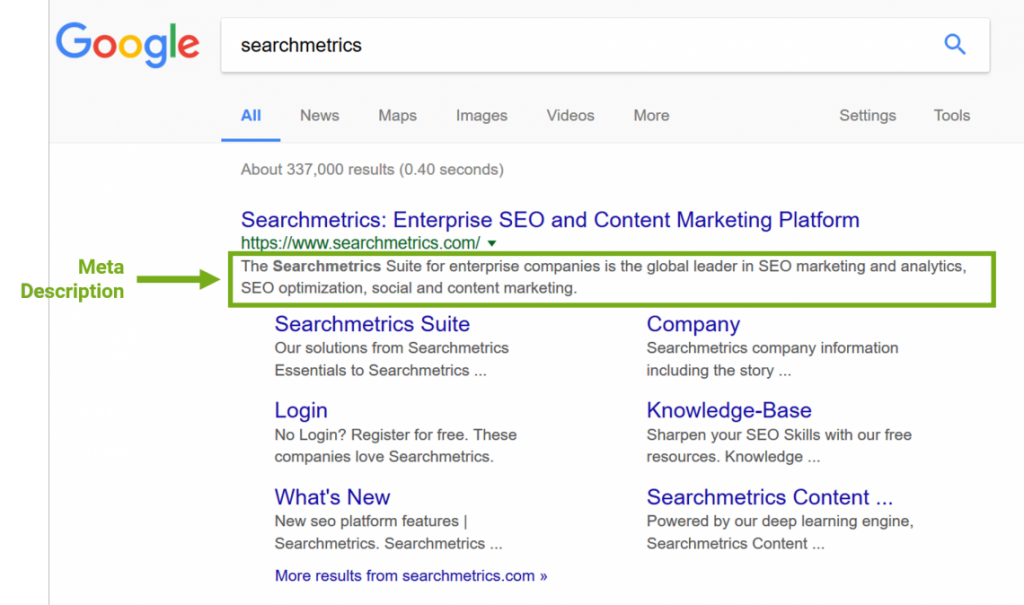Are you looking to increase visibility and drive traffic to your nonprofit website? Look no further than SEO! Search Engine Optimization (SEO) improves the quality and quantity of website traffic by increasing visibility in search engine results pages.
By optimizing your website for search engines organically, you can ensure that your nonprofit is found by potential donors, volunteers, and supporters searching for organizations like yours. With the right SEO strategies in place, your nonprofit can rise above the competition and make a bigger impact in your community
Here are 20 SEO tips for nonprofit organizations to get organic traffic in 2023!
1. Conduct Keyword Research

Keyword research is crucial in creating an SEO strategy for your nonprofit website. You can optimize your website’s content by identifying target keywords to rank higher in search engine results for those terms. This can help increase the visibility of your organization and drive more donations.
Utilizing tools such as Google AdWords Keyword Planner, you can research and identify keywords that are relevant to your organization and have a high search volume. You can improve your search engine rankings and reach a larger audience by including these target keywords in your website’s content, meta tags, and URLs.
2. Create High-Quality Content
High-quality content is essential for SEO. By creating content relevant to the keywords people search for, such as “SEO for nonprofits,” you can improve your website’s search engine rankings.
By understanding the search intent of your target audience, you can create content that answers their questions and provides valuable information. This will increase the chances that your website will appear in relevant search results, improving your SEO.
3. Increase Site Authority with Backlinks

Building backlinks to your nonprofit website, also known as link building, can help to increase its authority in the eyes of search engines. When other websites link to your website, it signals to search engines that your website is a credible and valuable source of information.
These are known as external links. The more external links pointing to your website, the higher its authority will be, and the better it will rank on search engines. You can improve your website’s search engine rankings by actively seeking out opportunities to build backlinks through link building.
4. Optimize Meta Tags and Meta Descriptions
Optimizing meta tags and meta descriptions on your nonprofit website can help to improve its SEO performance by making it more likely that people will click through to your website from search engine results pages (SERPs). Meta tags and meta descriptions are the snippets of text that appear under the title of your webpage on SERPs such as Google and other search engines.

Image Credits: searchmetrics.com
Including relevant keywords in your meta descriptions can increase the chances that your website will appear in relevant search results. Additionally, an appealing meta description can increase your website’s click-through rate (CTR), which can help improve its ranking on SERPs.
5. Optimize Images with Alt Text
To improve SEO for your nonprofit by optimizing images, use alt text and tags that include keywords related to your organization. The alt text should be a brief, accurate image description and contain relevant keywords.
Additionally, use keywords in the file name and title of the image when uploading it to your website. This will help search engines understand the context and relevance of the image to your content.
6. Use a Mobile-Friendly Design

A mobile-friendly design for your nonprofit website can lead to SEO success by improving the user experience for visitors accessing your site on mobile devices. Search engines prioritize websites that are easy to navigate and view on mobile, and a mobile-friendly design can help with this.
Additionally, having a mobile-friendly design can also help your website’s bounce rate, as visitors are more likely to stay and engage with your site when it is optimized for mobile.
7. Optimize for Fast Loading Speeds

Optimizing your nonprofit website for faster speeds can help enhance your SEO practices by improving the user experience for visitors. Search engines prioritize websites that load quickly and are easy to navigate; a faster website can help with this.
A faster website can also help your website’s bounce rate, as visitors are less likely to leave your site if the pages load quickly. Google uses website speed as a ranking factor on its search engine results, so a faster website will likely rank higher.
8. Use Internal Links
Internal linking can boost SEO performance for your nonprofit website by creating a clear and organized structure for your site’s content. By linking relevant pages within your site, you can help search engines understand the hierarchy and importance of your content.
When building your internal links, be sure to use keywords in the anchor text to indicate the relevance of the linked page to the content on the linking page. This will help the search engines understand the context of the linked pages and their relevance to the website. This can also allow visitors to navigate your site more easily, reducing bounce rates and increasing engagement.
9. Use Social Media

A nonprofit website can use social media to improve SEO performance by increasing brand awareness and driving traffic to the website. By regularly posting content on social media that links back to the website, the nonprofit can increase the number of inbound links to the site, which can help boost its search engine rankings.
Social media can also help with engagement and website bounce rate. By engaging with followers on social media and encouraging them to visit the website, the nonprofit can increase the time visitors spend on the site, which can also help improve its search engine rankings.
10. Get Listed in Nonprofit Directories
Getting listed in nonprofit directories can help your website achieve better SEO by increasing the number of inbound links to your site. Inbound links are one of the most important ranking factors for search engines, and when other websites link to your site, it signals to search engines that your site is valuable and credible.

Image Credits: connectva.org
Additionally, being listed in nonprofit directories can increase your visibility, leading to more website traffic and engagement. Also, being listed in directories specific to your field or area of expertise can help your organization be found by those looking for resources or services in that area, which can also help to increase website traffic.
11. Optimize for Local Search

Image Credits: adamerica.org
Optimizing your nonprofit for local search can help your website SEO by taking advantage of local SEO opportunities. A local SEO strategy can include updating your Google My Business listing, which can help your nonprofit show up in Google Maps and the local pack of search results.
Additionally, including your location on your website and in the meta tags of your pages can help search engines understand the location of your organization and show your website to users searching for nonprofits in your area.
This can increase visibility and drive traffic to your website from local search queries. By focusing on local SEO opportunities, you can improve your website’s visibility and increase the chances of being found by potential donors, volunteers, and supporters in your area.
12. Use Schema Markup

Image Credits: Ahrefs.com
Schema markup is a way to help search engines better understand the content on your website, which can improve your nonprofit website’s SEO performance. By adding schema markup to your website, you can provide search engines with more information about your organization, such as your address, phone number, and hours of operation.
You can also use schema markup to indicate the type of content on your pages, such as articles, events, and reviews. This can help search engines understand the context of your content and show it in relevant search results.
Schema markup can also help your organization be featured in rich snippets, which can increase the click-through rate and improve the visibility of your website in search results. It is a relatively simple process, and it can be added to your website through specialized plugins or by directly adding code to the website’s source code.
13. Optimize Your URL
Optimizing your nonprofit website URL can help your SEO performance by making it easily understandable for search engines and users. This can include using keywords in the URL, keeping it short and straightforward, and using hyphens to separate words.
This can make it easier for search engines to crawl your site and understand the context of your pages and make it more user-friendly. Additionally, it can help users to understand the purpose of the page and to remember the URL making it easier to share or come back to later on.
14. Structure Your Content

Image Credits: contentmarketinginstitute.com
Structuring content for your nonprofit website can help your SEO performance by making it more easily understandable for search engines and users. This can include using headings (H1, H2, H3), subheadings, bullet points, and short paragraphs. This can make it easier for search engines to crawl your site and understand the structure and hierarchy of your content and make it more user-friendly.
Additionally, structuring your content in an easily scannable way can help users find the information they are looking for quickly and efficiently, reducing bounce rate and increasing engagement on your website. This can also help search engines understand the main topics of your website and the relevance of your content to specific queries, which can improve your website’s visibility in search results.
15. Monitor Your Website with Google Search Console
Monitoring your nonprofit website using Google Console can help you improve SEO by providing valuable insights about your site’s performance. The Google Console can show you how search engines crawl your site, including any errors or issues preventing your pages from being indexed.
It can also provide data on your website’s click-through rate, bounce rate, and other metrics that can give you a better understanding of how users are interacting with your site.
It can also provide insights into the keywords driving traffic to your website, which can help you optimize your pages and improve your website’s visibility in search results. By regularly monitoring your website using Google Console, you can identify areas for improvement, track your progress, and adjust your SEO strategy to achieve better results.
16. Avoid Duplicate Content
Avoiding duplicate content on your nonprofit website can help with SEO by ensuring that search engines only index and rank the source of the content.
Having multiple versions of the same content on your website can confuse search engines, dilute link equity, and may cause a penalty or lower rankings.
By having unique and relevant content, search engines can better understand the context of your website and give it higher visibility in search results, thus increasing the chances of being found by potential donors, volunteers, and supporters.
17. Track Your Website Performance

Tracking your nonprofit website’s SEO health provides insights into how search engines and users interact with your site, allowing you to identify areas for improvement and make data-driven decisions to optimize your website and improve visibility in search results.
18. Use a Site Map
Using a site map can help you boost SEO for your nonprofit website by making it easier for search engines to discover and crawl your pages. A site map provides a hierarchical structure of your website’s pages, making it easier for search engines to understand the organization of your content and index it efficiently.
19. Protect the Pages You Don’t Want Indexed
Protecting the pages you don’t want robots to index for your nonprofit website can help SEO by preventing search engines from wasting resources on pages that aren’t important or relevant and avoiding duplicate content issues. This can help search engines focus on the important pages of your website and improve the overall visibility of your website in search results.
20. Include Keywords in the Content Structure
Including the primary keyword in the title tag and header tag of your website’s pages can help to optimize the content structure and improve your nonprofit website’s SEO.
Title and header tags provide context and relevance to your pages, and search engines use them to understand the main topics of your content. Including the primary keyword in these tags can help increase your website’s visibility in search results for that keyword.
Conclusion
Search Engine Optimization (SEO) is a powerful tool for any nonprofit looking to increase visibility and drive more traffic to their website. By optimizing your website for search engines, you can ensure that your organization is found by potential donors, volunteers, and supporters searching for organizations like yours.
With the right SEO strategies, your nonprofit can rise above the competition and make a bigger impact in your community. With the right approach, SEO can be a powerful tool for growing your nonprofit’s reach and making a greater impact.
Jacky Chou is an electrical engineer turned marketer. He is the founder of Indexsy, Far & Away, Laurel & Wolf, a couple FBA businesses , and about 40 affiliate sites. He is a proud native of Vancouver, BC, who has been featured on Entrepreneur.com, Forbes, Oberlo and GoDaddy.





